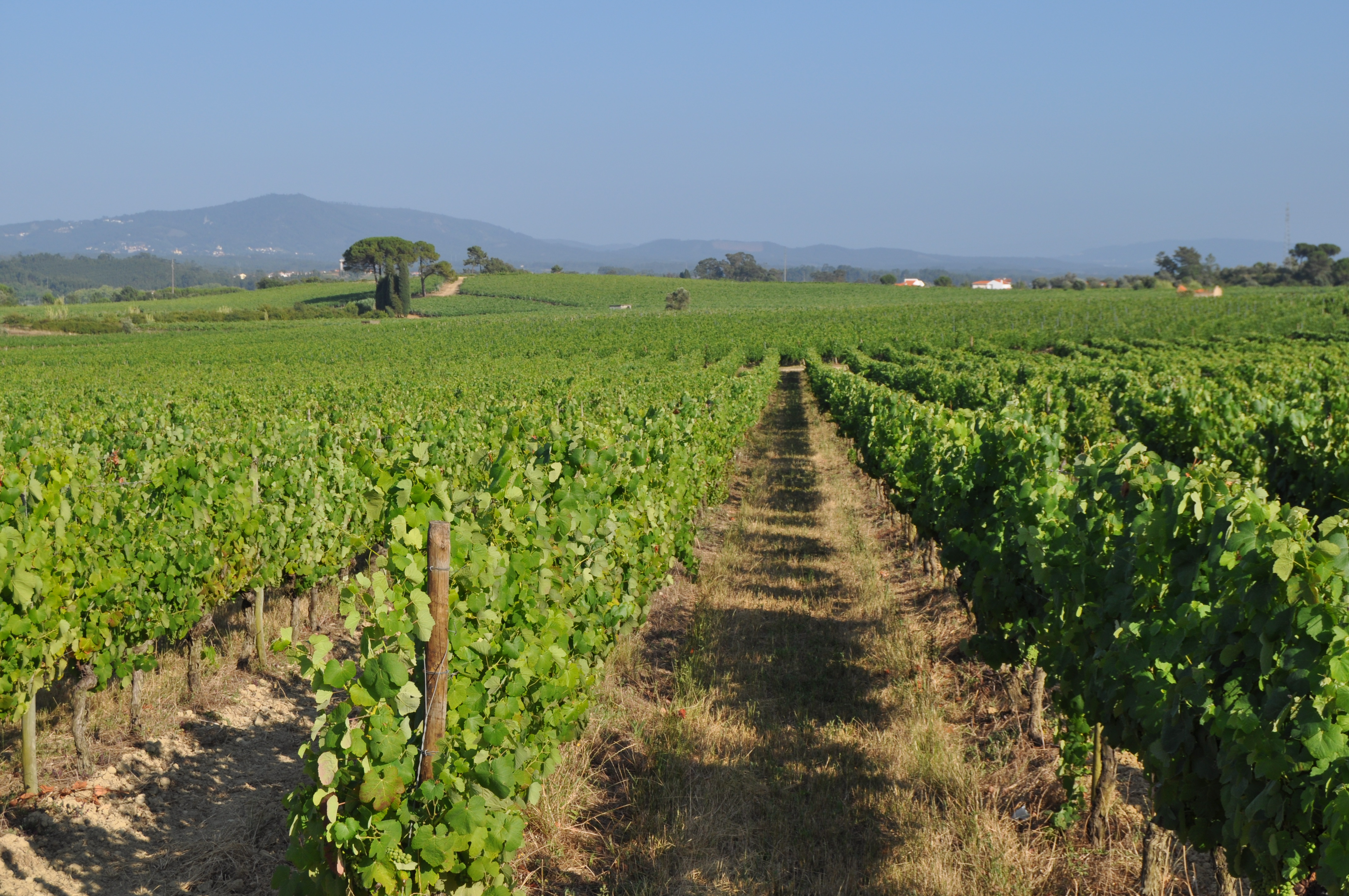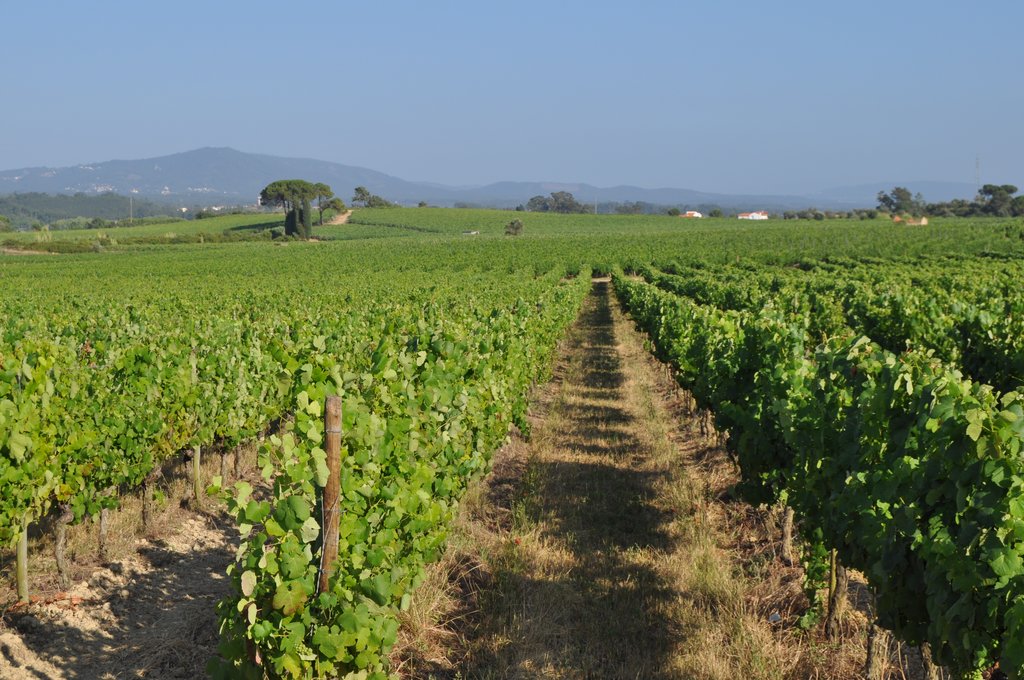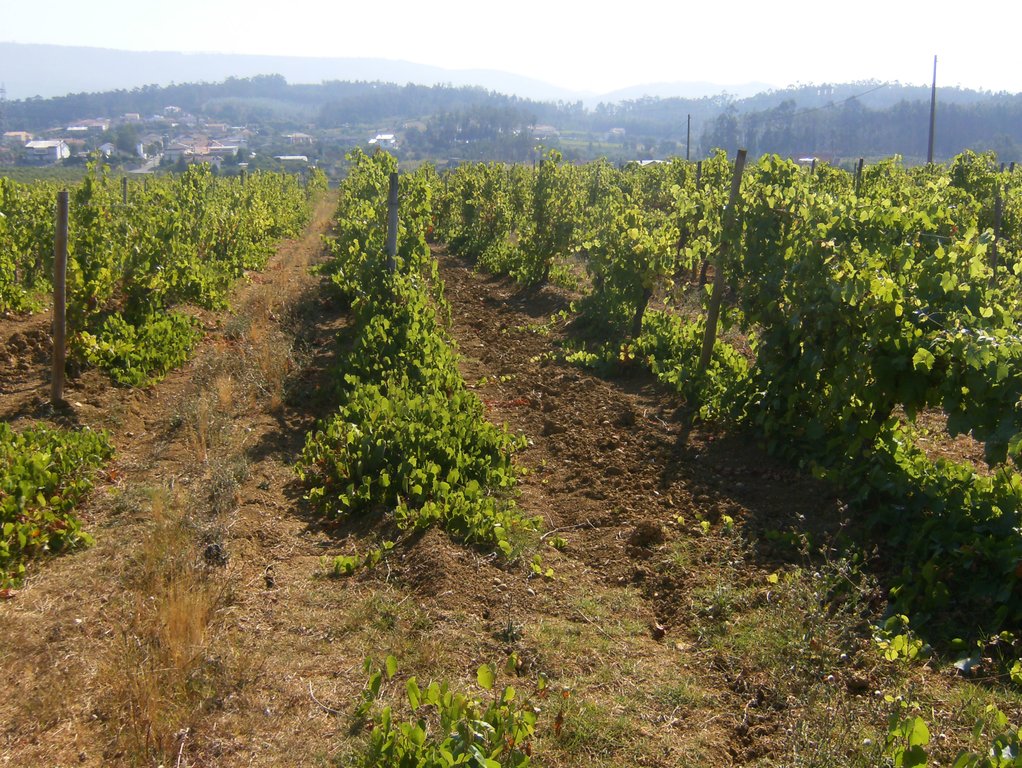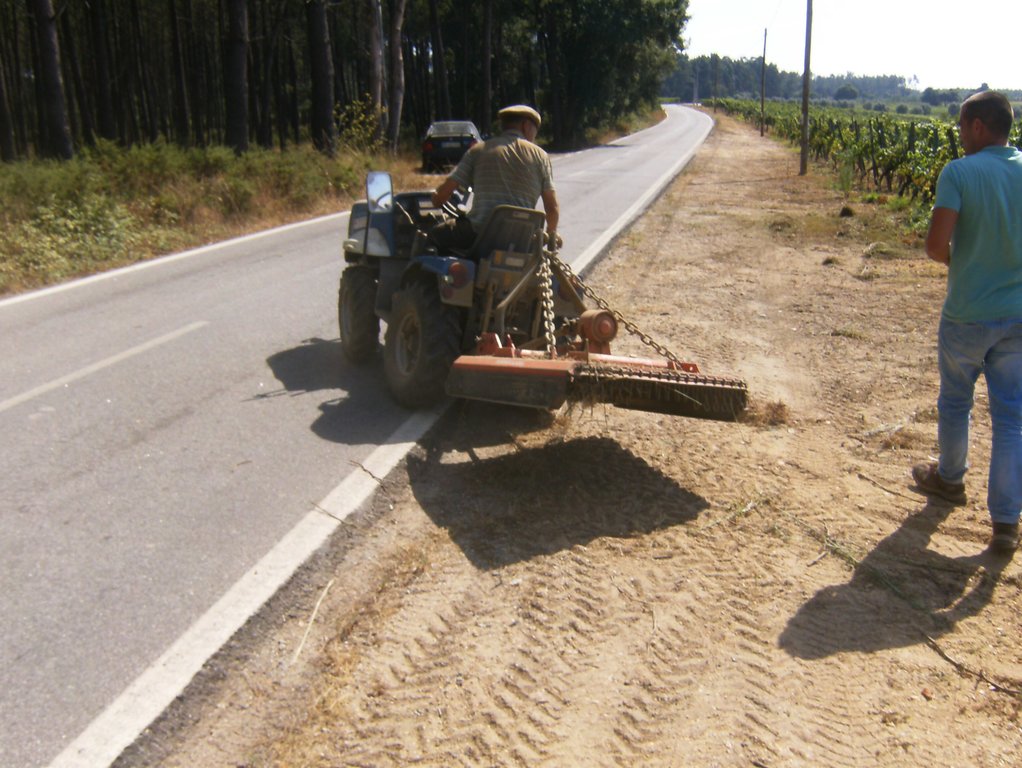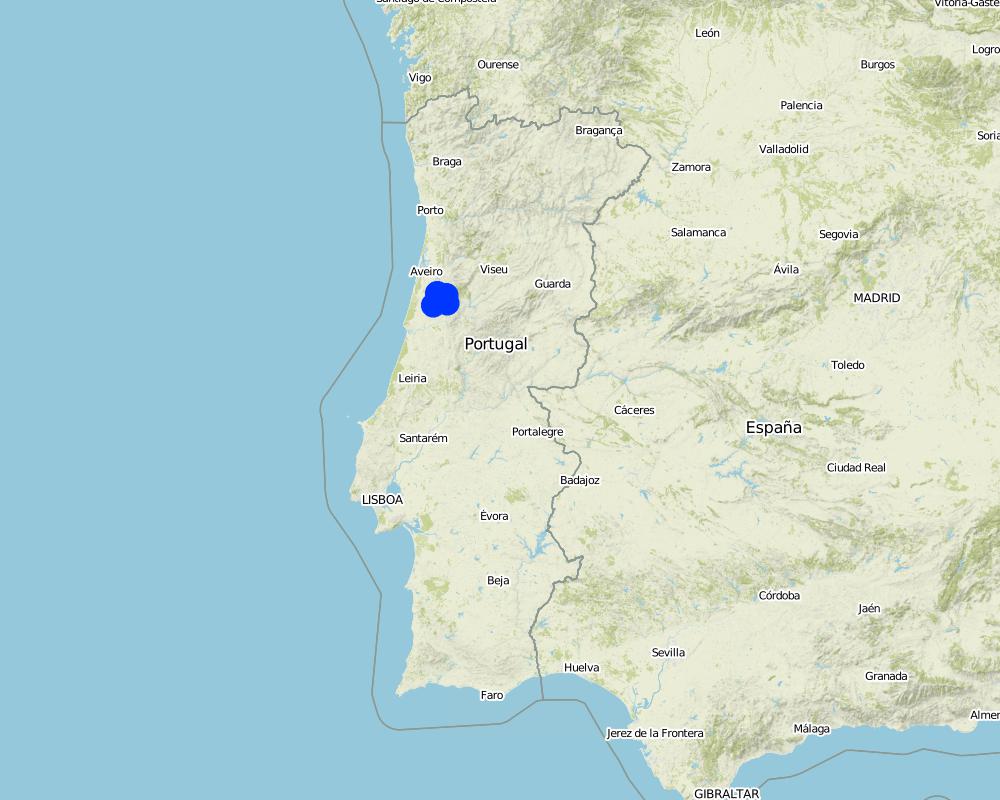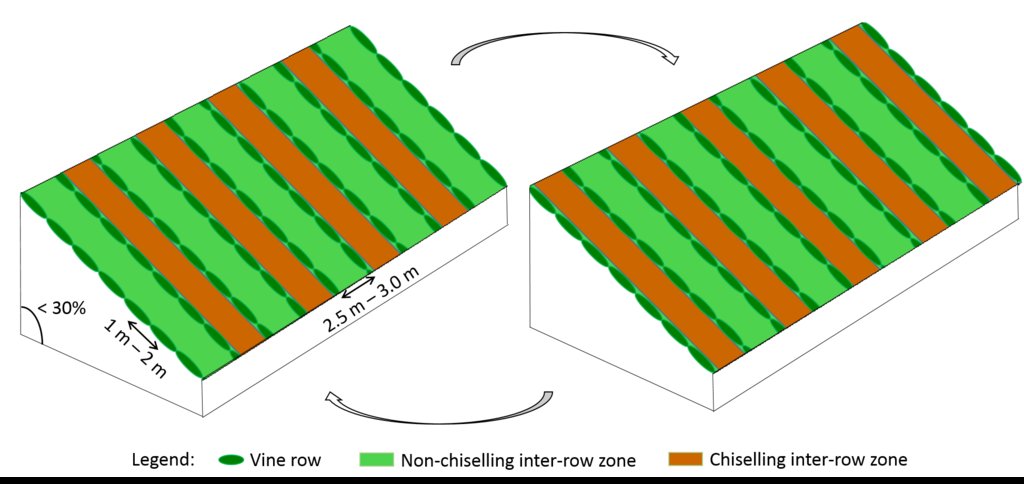Minimum tillage in Mediterranean vineyards [ប្រទេសព័រទុយហ្គាល់]
- ការបង្កើត៖
- បច្ចុប្បន្នភាព
- អ្នកចងក្រង៖ Carla Ferreira
- អ្នកកែសម្រួល៖ –
- អ្នកត្រួតពិនិត្យច្រើនទៀត៖ Ursula Gaemperli, Gudrun Schwilch, Alexandra Gavilano
Minimum tillage
technologies_2879 - ប្រទេសព័រទុយហ្គាល់
ពិនិត្យមើលគ្រប់ផ្នែក
ពង្រីកមើលទាំងអស់ បង្រួមទាំងអស់1. ព័ត៌មានទូទៅ
1.2 ព័ត៌មានលម្អិតពីបុគ្គលសំខាន់ៗ និងស្ថាប័នដែលចូលរួមក្នុងការវាយតម្លៃ និងចងក្រងឯកសារនៃបច្ចេកទេស
អ្នកជំនាញឯកទេស SLM:
ឈ្មោះគម្រោងដែលបានចងក្រងឯកសារ/ វាយតម្លៃលើបច្ចេកទេស (បើទាក់ទង)
Interactive Soil Quality assessment in Europe and China for Agricultural productivity and Environmental Resilience (EU-iSQAPER)ឈ្មោះអង្គភាពមួយ (ច្រើន) ដែលបានចងក្រងឯកសារ/ វាយតម្លៃបច្ចេកទេស (បើទាក់ទង)
Centro de Estudos de Rescursos Naturais, Ambiente e Sociedade (CERNAS) - ប្រទេសព័រទុយហ្គាល់1.3 លក្ខខណ្ឌទាក់ទងទៅនឹងការប្រើប្រាស់ទិន្នន័យដែលបានចងក្រងតាមរយៈ វ៉ូខេត
អ្នកចងក្រង និង(បុគ្គលសំខាន់ៗ)យល់ព្រមទទួលយកនូវលក្ខខណ្ឌនានាទាក់ទងទៅនឹងការប្រើប្រាស់ទិន្នន័យដែលបានចងក្រងតាមរយៈវ៉ូខេត:
បាទ/ចា៎
1.4 សេចក្តីប្រកាសស្តីពីចីរភាពនៃការពណ៌នាពីបច្ចេកទេស
តើបច្ចេកទេសដែលបានពណ៌នានេះមានបញ្ហាដែលផ្តោតលើការធ្លាក់ចុះគុណភាពដី, បើដូច្នេះវាមិនអាចត្រូវបានប្រកាសថាជាបច្ចេកទេសនៃការគ្រប់គ្រងប្រកបដោយចីរភាពទេ?
ទេ
2. ការពណ៌នាពីបច្ចេកទេស SLM
2.1 ការពណ៌នាដោយសង្ខេបពីបច្ចេកទេស
និយមន័យបច្ចេកទេស:
Minimum tillage in vineyards is performed in alternated inter-row zone, to promote soil decompation and maintain partial vegetation cover.
2.2 ការពណ៌នាលម្អិតពីបច្ចេកទេស
ការពណ៌នា:
Portugal is one of the larger wine producers in Europe, with vineyard area covering 27% of permanent crops. Vineyards play an important role in the Portuguese economy, not only due to the impact of wine industry but also the important cultural heritage and great influence on tourism sector. There are thirteen specialized wine regions in the country, from which we highlight Bairrada region, located in central mainland, where minimum tillage is becoming popular. Bairrada has a Mediterranean climate, characterized by a long dry summer, although the strong influence of the Atlantic Ocean. Vineyard is the most relevant crop in Bairrada. In this region, farmland is mostly cultivated by landowners, comprising small winegrowers (5-10ha), most of them members of local farmers associations, as well as large producers (100-500ha) with a relevant position in the world wine market.
In vineyards, tillage is performed to promote de-compaction of the typical medium/fine soils and weeds control. In Bairrada wine region, soil tillage is usually performed twice per year – in autumn and spring, depending on weather conditions. Tillage is performed with a ripper and disc arrow (10-15cm), since mechanized vineyards require vines arranged according to horizontal wire bundles. However, tillage activities favour soil degradation, namely due to soil erosion and increasing mineralization of organic matter. In order to mitigate land degradation, minimum tillage of inter-row zone was adopted. No tillage is not applied by the farmers due to the need to de-compact the soil, favoured by the relatively high clay content. The minimum tillage is performed in alternated inter-rows, to keep vegetation cover in part of the vineyard. Tillage inter-row switch every time, so that each inter-row is not tilled more than once per year. Weeds control in the non-tilled inter-rows is performed using a rotary brush mower. In the plant zone, weeds are controlled with herbicides, applied twice per year: autumn-winter (before vine plant winding) and spring-summer (during vegetative growth). During the hot dry summer, weeds are naturally controlled due to water-stress. Mechanical intervention is also performed for pest and disease control, generally applied as preventive measures. Phytosanitary treatments are performed upon receipt of notices from Regional Directorate of Agriculture or technicians from local farmers association. These notices also include recommendations about the type of products and the application rate. In the majority of the Region, pruning and harvesting is performed manually. Pruning residues are typically mowed and left at the soil surface.
The adoption of minimum tillage was triggered by governmental subsidies. Farmers recognize the impact of this technology on the environment, namely on preventing soil degradation and enhancing biodiversity. However, soil compaction and water competition between vegetation cover and vines (over the summer) are major concerns.
2.3 រូបភាពនៃបច្ចេកទេស
2.5 ប្រទេស/តំបន់/ទីតាំងកន្លែង ដែលបច្ចេកទេសត្រូវបានអនុវត្ត និងបានគ្រប់ដណ្តប់ដោយការវាយតម្លៃនេះ
ប្រទេស:
ប្រទេសព័រទុយហ្គាល់
តំបន់/រដ្ឋ/ខេត្ត:
Bairrada, Central Region
បញ្ជាក់ពីការសាយភាយនៃបច្ចេកទេស:
- ត្រូវបានផ្សព្វផ្សាយត្រឹមតំបន់មួយ
ប្រសិនបើមិនច្បាស់ពីទំហំផ្ទៃដី សូមធ្វើការប៉ាន់ប្រម៉ាណ:
- 100-1,000 គម2
Map
×2.6 កាលបរិច្ឆេទនៃការអនុវត្ត
ប្រសិនបើមិនច្បាស់ឆ្នាំ សូមបញ្ជាក់កាលបរិច្ឆេទដែលប្រហាក់ប្រហែល:
- តិចជាង 10ឆ្នាំមុន (ថ្មី)
2.7 ការណែនាំពីបច្ចេកទេស
- motivated by financial support from the government
មតិយោបល់ (ប្រភេទនៃគម្រោង ។ល។):
Technical recommendations provided by technicians of farmers associations.
3. ចំណាត់ថ្នាក់នៃបច្ចេកទេស SLM
3.1 គោលបំណងចម្បង (១ ឬច្រើន) នៃបច្ចេកទេសនេះ
- កាត់បន្ថយ, បង្ការ, ស្តារឡើងវិញនូវការធ្លាក់ចុះគុណភាពដី
3.2 ប្រភេទដីប្រើប្រាស់មួយប្រភេទ (ច្រើនប្រភេទ) ដែលបានអនុវត្តបច្ចេកទេស

ដីដាំដំណាំ
- ប្រភេទដើមឈើធំៗ និងដើមឈើតូចៗ
ប្រភេទដើមឈើធំៗ និងដើមឈើតូចៗ - បញ្ជាក់ប្រភេទ:
- ទំពាំងបាយជូ
ចំនួនសារដែលដាំដំណាំក្នុងមួយឆ្នាំ:
- 1
សូមបញ្ជាក់:
One harvesting per year
មតិយោបល់:
Main crops (cash and food crops): Vineyard
3.4 ការផ្គត់ផ្គង់ទឹក
ការផ្គត់ផ្គង់ទឹកនៅកន្លែងអនុវត្តបច្ចេកទេស:
- ទឹកភ្លៀង
3.5 ក្រុម SLM ដែលបច្ចេកទេសស្ថិតនៅក្នុង
- ធ្វើឱ្យប្រសើរឡើងគម្របដី/ ដំណាំគម្របដី
- កាត់បន្ថយការរំខានដល់ដី
3.6 វិធានការ SLM ដែលបញ្ចូលនូវបច្ចេកទេស

វិធានការក្សេត្រសាស្ត្រ
- A1: ដំណាំ/គម្របដី
- A3: ការរក្សាស្រទាប់ដីខាងលើ
A3: ប្រព័ន្ធភ្ជួររាស់ខុសៗគ្នា:
A 3.2: Reduced tillage (> 30% soil cover)
3.7 កំណត់ប្រភេទនៃការធ្លាក់ចុះគុណភាពដីសំខាន់ៗដែលបច្ចេកទេសនេះបានដោះស្រាយ

ការហូរច្រោះដីដោយសារទឹក
- Wt: ការបាត់ដីស្រទាប់លើដោយការហូរច្រោះ

ការបាត់បង់រូបសាស្ត្រនៃដី
- Pc: ការហាប់ណែន
3.8 ការពារ កាត់បន្ថយ ឬស្តារឡើងវិញនៃការធ្លាក់ចុះគុណភាពដី
បញ្ជាក់ពីគោលដៅរបស់បច្ចេកទេស ដែលផ្តោតទៅការធ្លាក់ចុះគុណភាពដី:
- ការកាត់បន្ថយការធ្លាក់ចុះគុណភាពដី
4. បច្ចេកទេសជាក់លាក់ សកម្មភាពអនុវត្ត ធាតុចូល និងថ្លៃដើម
4.1 គំនូសបច្ចេកទេសនៃបច្ចេកទេសនេះ
លក្ខណៈពិសេសនៃបច្ចេកទេស (ទាក់ទងនឺងគំនូរបច្ចេកទេស):
Minimum tillage in vineyards is performed in the inter-row zone, in alternated lines switching between chiselling activities (10-15cm), usually performed in autumn and spring. There is no specific technical recommendations.
Vines are disposed horizontally, supported by wire or cord sustained by wood or metal support. Planting compass varies with soil fertility, type of wine, as well as expected quantity and quality of production, and desired height of the edges. Typically, distance between vine plants within each row ranges from 1m to 2m, and the inter-rows distance from 2.5m to 3.0m, leading to densities of 1000-3000 vines/ha. Generally vineyards are installed on natural surface profile for slopes lower than 30%, and in terraces for hillslopes of 30-50%. Vine plantation is forbidden for slopes greater than 50%.
ឈ្មោះអ្នកនិពន្ធ:
Carla Ferreira
កាលបរិច្ឆេទ:
26/06/2017
4.2 ព័ត៌មានទូទៅដែលពាក់ព័ន្ធនឹងការគណនាធាតុចូល និងថ្លៃដើម
កំណត់របៀបនៃការគណនាថ្លៃដើម និងធាតុចូល:
- ក្នុងតំបន់អនុវត្តបច្ចេកទេស
កំណត់ទំហំ និងឯកត្តាផ្ទៃដី:
1 ha per year
ផ្សេងៗ/ រូបិយប័ណ្ណជាតិ (បញ្ជាក់):
euro
បើពាក់ព័ន្ធសូមកំណត់អត្រាប្តូរប្រាក់ពីដុល្លាទៅរូបិយប័ណ្ណតំបន់ (ឧ. 1 ដុល្លារ = 79.9 រៀលនៃរូបិយប័ណ្ណប្រេស៊ីល) ៖ 1 ដុល្លារ =:
0,86615
កំណត់ថ្លៃឈ្នួលជាមធ្យមនៃការជួលកម្លាំងពលកម្មក្នុងមួយថ្ងៃ:
30
4.3 សកម្មភាពបង្កើត
| សកម្មភាព | រយៈពេល (រដូវកាល) | |
|---|---|---|
| 1. | Chiselling of alternated inter-row zone | Autumn/Spring |
| 2. | Mechanical weeds control in alternated inter-row | Autumn/Spring |
| 3. | Chemical control of weeds in plant zone | Autumn-Winter and Spring-Summer |
4.4 ថ្លៃដើម និងធាតុចូលដែលត្រូវការសម្រាប់ការបង្កើតបច្ចេកទេស
| បញ្ជាក់ពីធាតុចូល | ឯកតា | បរិមាណ | ថ្លៃដើមក្នុងមួយឯកតា | ថ្លៃធាតុចូលសរុប | % នៃថ្លៃដើមដែលចំណាយដោយអ្នកប្រើប្រាស់ដី | |
|---|---|---|---|---|---|---|
| សម្ភារៈ | Chisel | Equipment | 1,0 | 1000,0 | 1000,0 | 100,0 |
| សម្ភារៈ | Rotary brush mower | Equipment | 1,0 | 1600,0 | 1600,0 | 100,0 |
| សម្ភារៈ | Sprayer | Equipment | 1,0 | 2500,0 | 2500,0 | 100,0 |
| ថ្លៃដើមសរុបក្នុងការបង្កើតបច្ចេកទេស | 5100,0 | |||||
| ថ្លៃដើមសរុបក្នុងការបង្កើតបច្ចេកទេសគិតជាដុល្លារ | 5888,13 | |||||
ប្រសិនបើអ្នកប្រើប្រាស់ដីមិនមានថ្លៃដើម 100% សូមបញ្ជាក់ថានរណាដែលចំណាយថ្លៃដើមដែលនៅសល់:
Young farmers (<40 years old) may submit agricultural projects for partial government funding.
មតិយោបល់:
The costs provided do not include the tractor aquisition costs.
4.5 សកម្មភាពថែទាំ
| សកម្មភាព | ពេលវេលា/ ភាពញឹកញាប់ | |
|---|---|---|
| 1. | Weeds control with herbicides (in vine rows) | Autumn-Winter and Spring-Summer |
| 2. | Mechanical weeds control (inter-row) | Autumn/Spring |
| 3. | Chiselling (inter-row) | Autumn/Spring |
4.6 កំណត់ថ្លៃដើមសម្រាប់ការថែទាំ/ សកម្មភាពរបស់បច្ចេកទេស (ក្នុងរយៈពេលមួយឆ្នាំ)
| បញ្ជាក់ពីធាតុចូល | ឯកតា | បរិមាណ | ថ្លៃដើមក្នុងមួយឯកតា | ថ្លៃធាតុចូលសរុប | % នៃថ្លៃដើមដែលចំណាយដោយអ្នកប្រើប្រាស់ដី | |
|---|---|---|---|---|---|---|
| កម្លាំងពលកម្ម | For chiselling activities | Person-days | 1,0 | 30,0 | 30,0 | 100,0 |
| កម្លាំងពលកម្ម | For mechanical weed control | Person-days | 1,0 | 30,0 | 30,0 | 100,0 |
| កម្លាំងពលកម្ម | For spraying of herbicides | Person-days | 1,0 | 30,0 | 30,0 | 100,0 |
| សម្ភារៈ | Tractor with chisel | 2,0 | 100,0 | 200,0 | 100,0 | |
| សម្ភារៈ | Tractor with rotary brush mower | 2,0 | 145,0 | 290,0 | 100,0 | |
| សម្ភារៈ | Tractor with spraying system | 1,0 | 150,0 | 150,0 | 100,0 | |
| ជី និងសារធាតុពុល | Herbicides | Litres | 6,0 | 12,0 | 72,0 | 100,0 |
| ថ្លៃដើមសរុបសម្រាប់ការថែទាំដំណាំតាមបច្ចេកទេស | 802,0 | |||||
| ថ្លៃដើមសរុបសម្រាប់ការថែទាំដំណាំតាមបច្ចេកទេសគិតជាដុល្លារ | 925,94 | |||||
4.7 កត្តាសំខាន់បំផុតដែលមានឥទ្ធិពលដល់ការចំណាយ
ពណ៌នាពីកត្តាប៉ះពាល់ចម្បងៗទៅលើថ្លៃដើម:
Machinery and labor
5. លក្ខណៈបរិស្ថានធម្មជាតិ និងមនុស្ស
5.1 អាកាសធាតុ
បរិមាណទឹកភ្លៀងប្រចាំឆ្នាំ
- < 250 មម
- 251-500 មម
- 501-750 មម
- 751-1,000 មម
- 1,001-1,500 មម
- 1,501-2,000 មម
- 2,001-3,000 មម
- 3,001-4,000 មម
- > 4,000 មម
កំណត់បរិមាណទឹកភ្លៀង (បើដឹង) ជា មីលីម៉ែត្រ:
1077,00
លក្ខណៈពិសេស/ មតិយោបល់លើរដូវភ្លៀង:
The climate is Mediterranean but with a significant influence of the Atlantic Ocean. The dry season extends from July to September and the rainiest period extends from November to February.
បញ្ជាក់ឈ្មោះឯកសារយោងនៃស្ថានីយឧតុនិយម:
10G/01UG from the Sistema Nacional de Informação de Recursos Hídricos
តំបន់កសិអាកាសធាតុ
- មានភ្លៀងមធ្យម
Csb according with Köppen climatic classification.
5.2 សណ្ឋានដី
ជម្រាលជាមធ្យម:
- រាបស្មើ (0-2%)
- ជម្រាលតិចតួច (3-5%)
- មធ្យម (6-10%)
- ជម្រាលខ្ពស់បន្តិច (11-15%)
- ទីទួល (16-30%)
- ទីទួលចោត (31-60%)
- ទីទួលចោតខ្លាំង (>60%)
ទម្រង់ដី:
- ខ្ពង់រាប
- កំពូលភ្នំ
- ជម្រាលភ្នំ
- ជម្រាលទួល
- ជម្រាលជើងភ្នំ
- បាតជ្រលងភ្នំ
តំបន់តាមរយៈកម្ពស់ :
- 0-100 ម
- 101-500 ម
- 501-1,000 ម
- 1,001-1,500 ម
- 1,501-2,000 ម
- 2,001-2,500 ម
- 2,501-3,000 ម
- 3,001-4,000 ម
- > 4,000 ម
បញ្ជាក់ថាតើបច្ចេកទេសនេះត្រូវបានអនុវត្តន៍នៅក្នុង:
- មិនពាក់ព័ន្ធទាំងអស់
មតិយោបល់ និងបញ្ចាក់បន្ថែមអំពីសណ្ឋានដី :
Óis do Bairro: 5%; São Lourenço: 10%; Estação Vitivinícola: 9%; Quinta do Valdoeiro: 10%; Pocariça: 14%. Altitude ranges from 25m to 55 m a.s.l.
5.3 ដី
ជម្រៅដីជាមធ្យម:
- រាក់ខ្លាំង (0-20 សម)
- រាក់ (21-50 សម)
- មធ្យម (51-80 សម)
- ជ្រៅ (81-120 សម)
- ជ្រៅខ្លាំង (> 120 សម)
វាយនភាពដី (ស្រទាប់លើ):
- មធ្យម (ល្បាយ, ល្បាប់)
- ម៉ត់/ ធ្ងន់ (ឥដ្ឋ)
វាយនភាពដី (> 20 សម ស្រទាប់ក្នុង):
- មធ្យម (ល្បាយ, ល្បាប់)
- ម៉ត់/ ធ្ងន់ (ឥដ្ឋ)
សារធាតុសរីរាង្គនៅស្រទាប់ដីខាងលើ:
- មធ្យម (1-3%)
- ទាប (<1%)
5.4 ទឹកដែលអាចទាញមកប្រើប្រាស់បាន និងគុណភាពទឹក
នីវ៉ូទឹកក្រោមដី:
5-50 ម
ទឹកលើដីដែលអាចទាញយកប្រើប្រាស់បាន:
មិនមាន/ គ្មាន
គុណភាពទឹក (មិនបានធ្វើប្រត្តិកម្ម):
ទឹកសម្រាប់តែការធ្វើកសិកម្ម (ស្រោចស្រព)
តើមានបញ្ហាភាពទឹកប្រៃហូរចូលមកដែរឬទេ?
ទេ
តើទឹកជំនន់កំពុងកើតមាននៅតំបន់នេះដែររឺទេ?
ទេ
5.5 ជីវៈចម្រុះ
ភាពសម្បូរបែបនៃប្រភេទ:
- ទាប
ភាពសម្បូរបែបនៃទីជម្រក:
- ទាប
មតិយោបល់ និងលក្ខណៈពិសេសផ្សេងទៀតលើជីវចម្រុះ:
There is a lack of studies regarding biodiversity.
5.6 លក្ខណៈនៃអ្នកប្រើប្រាស់ដីដែលអនុវត្តបច្ចេកទេស
នៅមួយកន្លែង ឬពនេចរ :
- នៅមួយកន្លែង
ទីផ្សារនៃប្រព័ន្ធផលិតកម្ម:
- ពាក់កណ្តាលពាណិជ្ជកម្ម (ផ្គត់ផ្គង់ខ្លួនឯង/ ពាណិជ្ជកម្ម)
- ពាណិជ្ជកម្ម/ ទីផ្សារ
ចំណូលក្រៅកសិកម្ម:
- តិចជាង 10% នៃចំណូល
- ច្រើនជាង 50% នៃចំណូល
កម្រិតជីវភាព:
- មធ្យម
- មាន
ឯកជន ឬក្រុម:
- ធ្វើខ្លួនឯង/ គ្រួសារ
- សហករ
កម្រិតប្រើប្រាស់គ្រឿងយន្ត:
- ប្រើកម្លាំងពលកម្ម
- គ្រឿងយន្ត/ ម៉ាស៊ីន
យេនឌ័រ:
- បុរស
អាយុរបស់អ្នកប្រើប្រាស់ដី:
- វ័យកណ្តាល
- មនុស្សចាស់
សូមបញ្ជាក់ពីលក្ខណៈពាក់ព័ន្ធផ្សេងទៀតអំពីអ្នកប្រើប្រាស់ដី:
Some of the farmers belong to large wine companies, which export the wine to several countries
5.7 ទំហំផ្ទៃដីជាមធ្យមនៃដីប្រើប្រាស់ដោយអ្នកប្រើប្រាស់ដី ក្នុងការអនុវត្តបច្ចេកទេស
- < 0.5 ហិកតា
- 0.5-1 ហិកតា
- 1-2 ហិកតា
- 2-5 ហិកតា
- 5-15 ហិកតា
- 15-50 ហិកតា
- 50-100 ហិកតា
- 100-500 ហិកតា
- 500-1,000 ហិកតា
- 1,000-10,000 ហិកតា
- > 10,000 ហិកតា
តើផ្ទៃដីនេះចាត់ទុកជាទំហំកម្រិតណាដែរ ខ្នាតតូច មធ្យម ឬខ្នាតធំ (ធៀបនឹងបរិបទតំបន់)?
- ខ្នាតមធ្យម
- ខ្នាតធំ
មតិយោបល់:
The area of land varies a lot. Individual farmers can have vineyards from 2-15ha, whereas large wine companies own up to 400 ha of vineyards in Bairrada region.
5.8 ភាពជាម្ចាស់ដី កម្មសិទ្ធប្រើប្រាស់ដី និងកម្មសិទ្ធប្រើប្រាស់ទឹក
ភាពជាម្ចាស់ដី:
- ក្រុមហ៊ុន
- ឯកជន មិនមានកម្មសិទ្ធ
កម្មសិទ្ធិប្រើប្រាស់ដី:
- ឯកជន
កម្មសិទ្ធប្រើប្រាស់ទឹក:
- អាស្រ័យផលសេរី (មិនមានការកំណត់)
មតិយោបល់:
The state also own some vineyards devoted to research.
5.9 ការប្រើប្រាស់សេវាកម្ម និងហេដ្ឋារចនាសម្ព័ន្ធ
សុខភាព:
- មិនល្អ
- មធ្យម
- ល្អ
ការអប់រំ:
- មិនល្អ
- មធ្យម
- ល្អ
ជំនួយបច្ចេកទេស:
- មិនល្អ
- មធ្យម
- ល្អ
ការងារ (ឧ. ការងារក្រៅកសិដ្ឋាន):
- មិនល្អ
- មធ្យម
- ល្អ
ទីផ្សារ:
- មិនល្អ
- មធ្យម
- ល្អ
ថាមពល:
- មិនល្អ
- មធ្យម
- ល្អ
ផ្លូវ និងការដឹកជញ្ជូន:
- មិនល្អ
- មធ្យម
- ល្អ
ទឹកផឹក និងអនាម័យ:
- មិនល្អ
- មធ្យម
- ល្អ
សេវាកម្មហិរញ្ញវត្ថុ:
- មិនល្អ
- មធ្យម
- ល្អ
6. ផលប៉ះពាល់ និងការសន្និដ្ឋាន
6.1 ផលប៉ះពាល់ក្នុងបរិវេណអនុវត្តបច្ចេកទេសដែលកើតមាន
ផលប៉ះពាល់លើសេដ្ឋកិច្ចសង្គម
ផលិតផល
ការគ្រប់គ្រងដី
មតិយោបល់/ ការបញ្ជាក់:
There are no measurements.
ទឹកដែលអាចទាញមកប្រើប្រាស់បាន និងគុណភាពទឹក
គុណភាពទឹកស្រោចស្រព
មតិយោបល់/ ការបញ្ជាក់:
Although there are no measurements, it is expected less sediment and nutrient export (linked to decreasing runoff), thus less impacts on aquatic ecossystems.
ចំណូល និងថ្លៃដើម
បន្ទុកការងារ
មតិយោបល់/ ការបញ្ជាក់:
Associated with decreasing chiseling activities
ផលប៉ះពាល់ទៅលើវប្បធម៌សង្គម
ឱកាសនៃការបង្កើតថ្មី
មតិយោបល់/ ការបញ្ជាក់:
Vineyards are relevant for tourism, thus, their sustainability is relevant.
ចំណេះដឹង SLM / ការធ្លាក់ចុះគុណភាពដី
មតិយោបល់/ ការបញ្ជាក់:
Farmers associations provide knowladge and trainning to farmers.
ផលប៉ះពាល់ទៅលើអេកូឡូស៊ី
វដ្តទឹក/លំហូរ
បរិមាណទឹក
មតិយោបល់/ ការបញ្ជាក់:
Not measured, but available water in the water cycle is expected.
គុណភាពទឹក
មតិយោបល់/ ការបញ្ជាក់:
There is no data, but decreasing runoff will contribute for lower sediment and nutrient exports, thus, improving water quality.
លំហូរទឹកលើផ្ទៃដី
ដី
សំណើមដី
មតិយោបល់/ ការបញ្ជាក់:
There are no measurements, but field studies performed elsewhere report increasing soil moisture due to vegetation cover.
គម្របដី
មតិយោបល់/ ការបញ្ជាក់:
Maintenance of vegetation cover in half of the vineyard inter-rows. However, vegetation cover is limited during dry periods.
ការបាត់បង់ដី
មតិយោបល់/ ការបញ្ជាក់:
Based on bibliography.
ដីហាប់
មតិយោបល់/ ការបញ្ជាក់:
Although there are no measurements, farmers report that ploughing activities are relevant to reduce soil compaction.
សារធាតុសរីរាង្គដី/ការបូនក្រោមដី
មតិយោបល់/ ការបញ្ជាក់:
According with literature review, minimum tillage decrease the mineralization of organic matter.
ជីវចម្រុះ៖ ដំណាំ, សត្វ
ដំណាំគម្រប
មតិយោបល់/ ការបញ្ជាក់:
Not measured.
ប្រភេទសត្វមានប្រយោជន៍
មតិយោបល់/ ការបញ្ជាក់:
Not measured, but expected given the partia maintenance of vegetation cover.
6.2 ផលប៉ះពាល់ក្រៅបរិវេណអនុវត្តបច្ចេកទេសដែលកើតមាន
ទឹកជំនន់ខ្សែទឹកខាងក្រោម
មតិយោបល់/ ការបញ្ជាក់:
Decreasing runoff will contribute for decreasing downstream flooding
កំណកល្បាប់ខ្សែទឹកខាងក្រោម
មតិយោបល់/ ការបញ្ជាក់:
Less runoff and erosion will decrease downstream siltation.
ទឹកក្រោមដី/ ការបំពុលទឹកទន្លេ
មតិយោបល់/ ការបញ្ជាក់:
Less runoff will provide lower sediment and nutrient exports to rivers.
ផលប៉ះពាល់នៃឧស្ម័នផ្ទះកញ្ចក់
មតិយោបល់/ ការបញ្ជាក់:
Lower tractor activities contribute for less greenhouse gases emission.
វាយតម្លៃផលប៉ះពាល់ក្រៅបរិវេណអនុវត្តបច្ចេកទេស (វាស់វែង):
The impacts have not been measured. The response is based on literature review and field observations.
6.3 ភាពប្រឈម និងភាពរួសនៃបច្ចេកទេសទៅនឹងការប្រែប្រួលអាកាសធាតុ និងគ្រោះអាកាសធាតុ/ គ្រោះមហន្តរាយ (ដែលដឹងដោយអ្នកប្រើប្រាស់ដី)
មតិយោបល់:
The technology does not have an impact on climate related issues.
6.4 ការវិភាគថ្លៃដើម និងអត្ថប្រយោជន៍
តើផលចំណេញ និងថ្លៃដើមត្រូវបានប្រៀបធៀបគ្នាយ៉ាងដូចម្តេច (ទស្សនៈរបស់អ្នកប្រើប្រាស់ដី)?
រយៈពេលខ្លី:
ប៉ះពាល់តិចតួចបំផុត
រយៈពេលវែង:
ប៉ះពាល់តិចតួចបំផុត
តើផលចំណេញ និងការថែទាំ/ ជួសជុលត្រូវបានប្រៀបធៀបគ្នាយ៉ាងដូចម្តេច (ទស្សនៈរបស់អ្នកប្រើប្រាស់ដី)?
រយៈពេលខ្លី:
វិជ្ជមានតិចតួច
រយៈពេលវែង:
វិជ្ជមានតិចតួច
6.5 ការទទួលយកបច្ចេកទេស
- 11-50%
ក្នុងចំណោមគ្រួសារទាំងអស់ដែលបានអនុវត្តបច្ចេកទេស តើមានប៉ុន្មានគ្រួសារដែលចង់ធ្វើដោយខ្លួនឯង ដោយមិនទទួលបានសម្ភារៈលើកទឹកចិត្ត/ប្រាក់ឧបត្ថម្ភ?:
- 0-10%
6.6 ការបន្សុំា
តើថ្មីៗនេះ បច្ចេកទេសនេះត្រូវបានកែតម្រូវដើម្បីបន្ស៊ាំទៅនឹងស្ថានភាពប្រែប្រួលដែរឬទេ?
ទេ
6.7 ភាពខ្លាំង/ គុណសម្បត្តិ/ ឱកាសនៃបច្ចេកទេស
| ភាពខ្លាំង/ គុណសម្បត្តិ/ ឱកាសនៅកន្លែងរបស់អ្នកប្រើប្រាស់ដី |
|---|
| Less herbicides and ploughing decreases maintenance costs. |
| It allows to reduce herbicide application to control weeds, thus favouring biodiversity. |
| ភាពខ្លាំង/ គុណសម្បត្តិ/ ឱកាស ទស្សនៈរបស់បុគ្គលសំខាន់ៗ |
|---|
| Minimum tillage is best suited for heavy, compacted and/or poorly drained soils, typical of vineyards. |
| It reduces land degradation, by improving soil structure and vegetation cover, important to reduce soil erosion. |
| Improving soil cover will improve soil moisture and aeration conditions, relevant for crop development and soil biodiversity. |
6.8 ភាពខ្សោយ/ គុណវិបត្តិ/ ហានិភ័យនៃបច្ចេកទេស និងវិធីសាស្ត្រដោះស្រាយ
| ភាពខ្សោយ/ គុណវិបត្តិ/ ហានិភ័យ ទស្សនៈរបស់អ្នកប្រើប្រាស់ដី | តើបច្ចេកទេសទាំងនោះបានដោះស្រាយបញ្ហាដូចម្តេច? |
|---|---|
| Soil compaction due to lower ploughing | Improve soil structure |
| ភាពខ្សោយ/ គុណវិបត្តិ/ ហានិភ័យ ទស្សនៈរបស់អ្នកចងក្រងឬបុគ្គលសំខាន់ៗ | តើបច្ចេកទេសទាំងនោះបានដោះស្រាយបញ្ហាដូចម្តេច? |
|---|---|
| Difficulty to maintain inter-row vegetation cover during the dry season | Replace vegetation cover by other materials (e.g. mulching) |
7. ឯកសារយោង និងវេបសាយ
7.1 វិធីសាស្ត្រ/ ប្រភពនៃព័ត៌មាន
- តាមការចុះទីវាល ការស្រាវជ្រាវនៅទីវាល
More than 10 field visits were performed over a three month period.
- ការសម្ភាសន៍ជាមួយអ្នកប្រើប្រាស់ដី
Seven
- ការសម្ភាសន៍ជាមួយអ្នកជំនាញ/ ឯកទេស
Two
- ការចងក្រងពីរបាកការណ៍ និងឯកសារផ្សេងៗទៀតដែលមាន
Several
តើពេលណាដែលទិន្នន័យបានចងក្រង (នៅទីវាល)?
01/05/2017
7.3 ការភ្ជាប់ទៅកាន់ព័ត៌មានពាក់ព័ន្ធលើប្រព័ន្ធអនឡាញ
ចំណងជើង/ ពណ៌នា:
Biddoccu, M., Ferraris, S., Pitacco, A., Cavallo, E. (2017). Temporal variability of soil management effects on soil hydrological properties, runoff and erosion at the field scale in a hillslope vineyard, North-West Italy. Soil & Tillage Research 165, 46–58.
វេបសាយ:
http://ac.els-cdn.com/S0167198716301386/1-s2.0-S0167198716301386-main.pdf?_tid=22418bb0-5b58-11e7-980c-00000aab0f6c&acdnat=1498582154_0fb04affbfbcf3f6e729ccdd354527ee
ចំណងជើង/ ពណ៌នា:
Byrne, S., Guire, L.M. (2005) Vineyard Floor Management. Final report to Grape and Wine Research & Development Corporation (RT 04/03-1)
វេបសាយ:
http://www.mvwi.com.au/items/526/Vineyard%20Floor%20Management%20RT%2004%2003%201.pdf
ចំណងជើង/ ពណ៌នា:
Cruz, A., Botelho, M., Silvestre, J., Castro R. (2012) Soil management: Introduction of tillage in a vineyard with a long-term natural cover. Journal of Viticulture and Enology 27(1), 27-38.
វេបសាយ:
http://www.scielo.mec.pt/pdf/ctv/v27n1/v27n1a03.pdf
ចំណងជើង/ ពណ៌នា:
Napoli, M., Marta, A.D., Zanchi, C.A., Orlandini, S. (2017). Assessment of soil and nutrient losses by runoff under different soil management practices in an Italian hilly vineyard. Soil & Tillage Research 168, 71–80.
វេបសាយ:
http://ac.els-cdn.com/S0167198716302604/1-s2.0-S0167198716302604-main.pdf?_tid=34c1a784-5b58-11e7-8e6a-00000aacb35d&acdnat=1498582186_a97504bbec990b26b9de92901fae9b9b
ចំណងជើង/ ពណ៌នា:
Puig-Montserrat, X., Stefanescu, C., Torre, I., Palet, J., Fàbregas, E., Dantart, J., Arrizabalaga, A., Flaquer, C. (2017). Effects of organic and conventional crop management on vineyard biodiversity. Agriculture, Ecosystems and Environment 243, 19–26.
វេបសាយ:
http://ac.els-cdn.com/S0167880917301603/1-s2.0-S0167880917301603-main.pdf?_tid=1428ce58-5b58-11e7-a61a-00000aacb361&acdnat=1498582131_0ca1f7a72aa834a0345b38122a2f7a05
ចំណងជើង/ ពណ៌នា:
Raclot, D., Bissonnais, Y.L., Louchart, X., Andrieux, P., Moussa, R., Volts, M. (2009). Soil tillage and scale effects on erosion from fields to catchment in a Mediterranean vineyard area. Agriculture, Ecosystems and Environment 134, 201–210.
វេបសាយ:
http://ac.els-cdn.com/S0167880909002023/1-s2.0-S0167880909002023-main.pdf?_tid=3a75799e-5b58-11e7-8adf-00000aab0f6b&acdnat=1498582195_b808271c0c5bcddc3fa189cccc11fea3
ការតភ្ជាប់ និងម៉ូឌុល
ពង្រីកមើលទាំងអស់ បង្រួមទាំងអស់ការតភ្ជាប់
គ្មានការតភ្ជាប់
ម៉ូឌុល
គ្មានម៉ូឌុល


